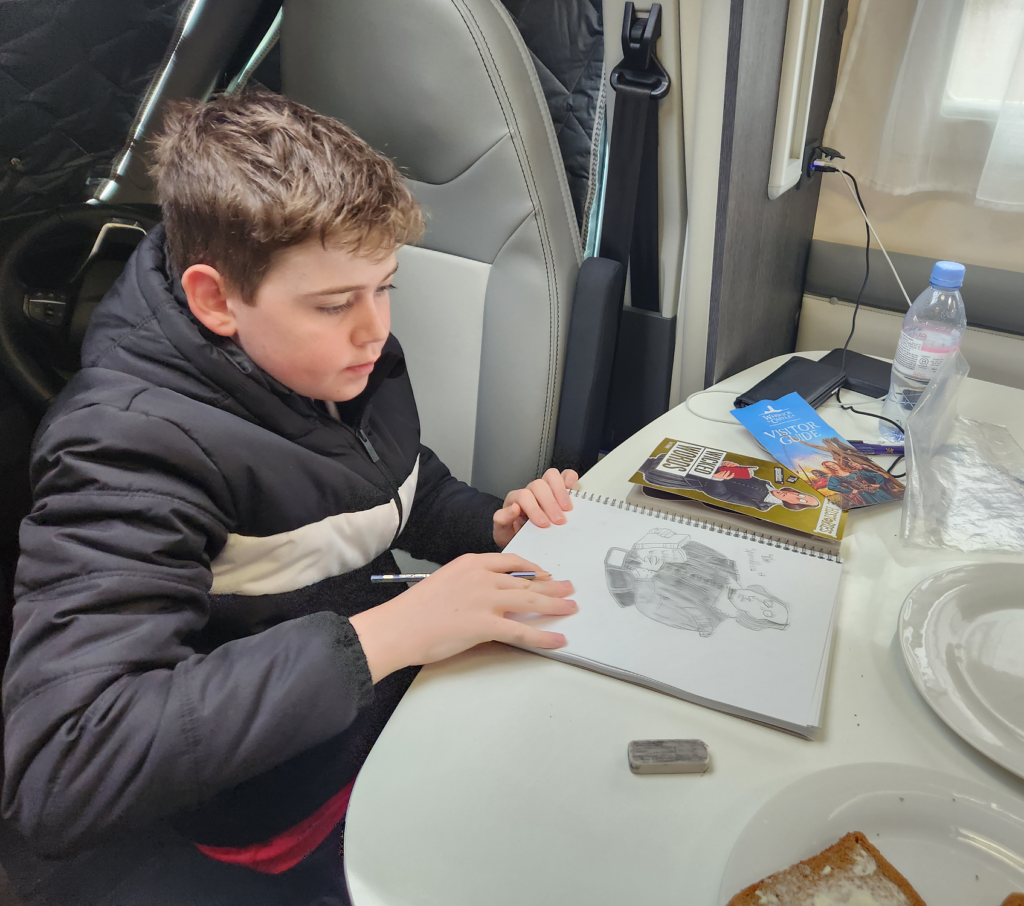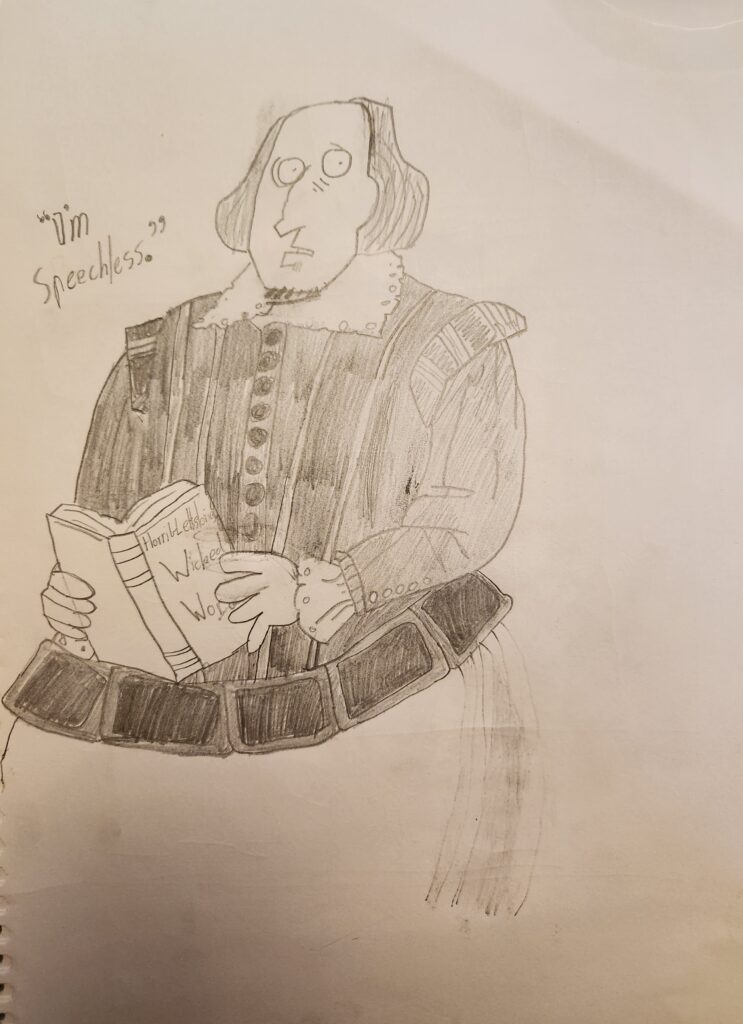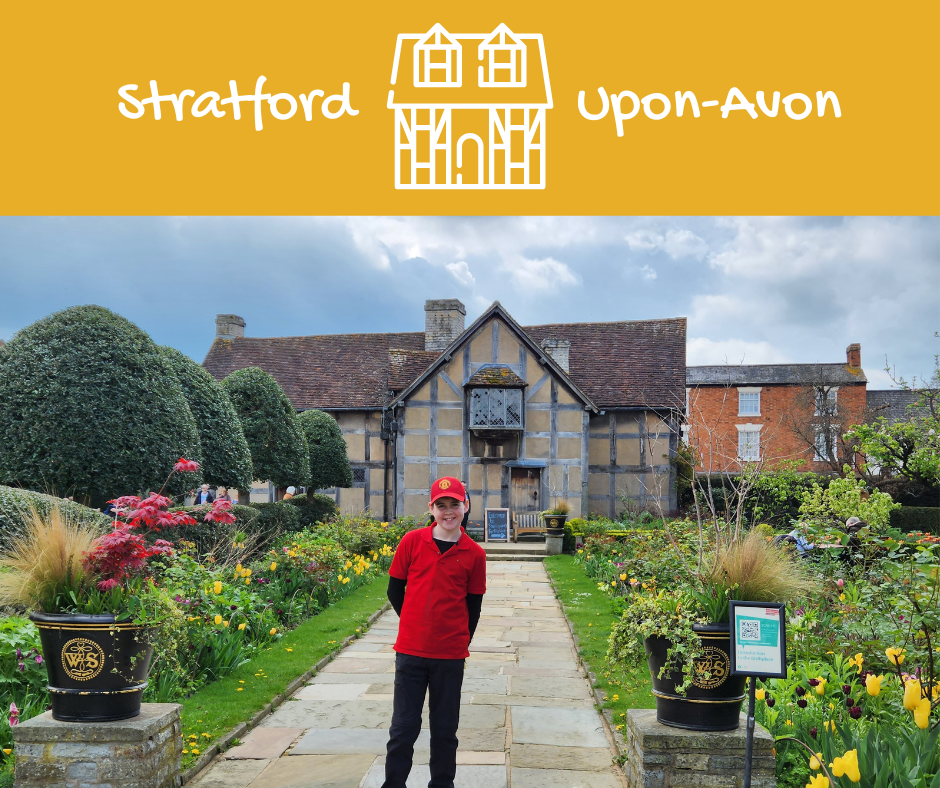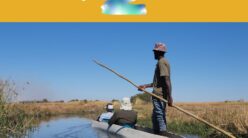We travelled to Stratford Upon Avon with our 12-year-old Kidsetter. Stratford Upon Avon is rich in history, beauty and buzzing with activity. I couldn’t wait to share the quaint town with our Kidsetter.
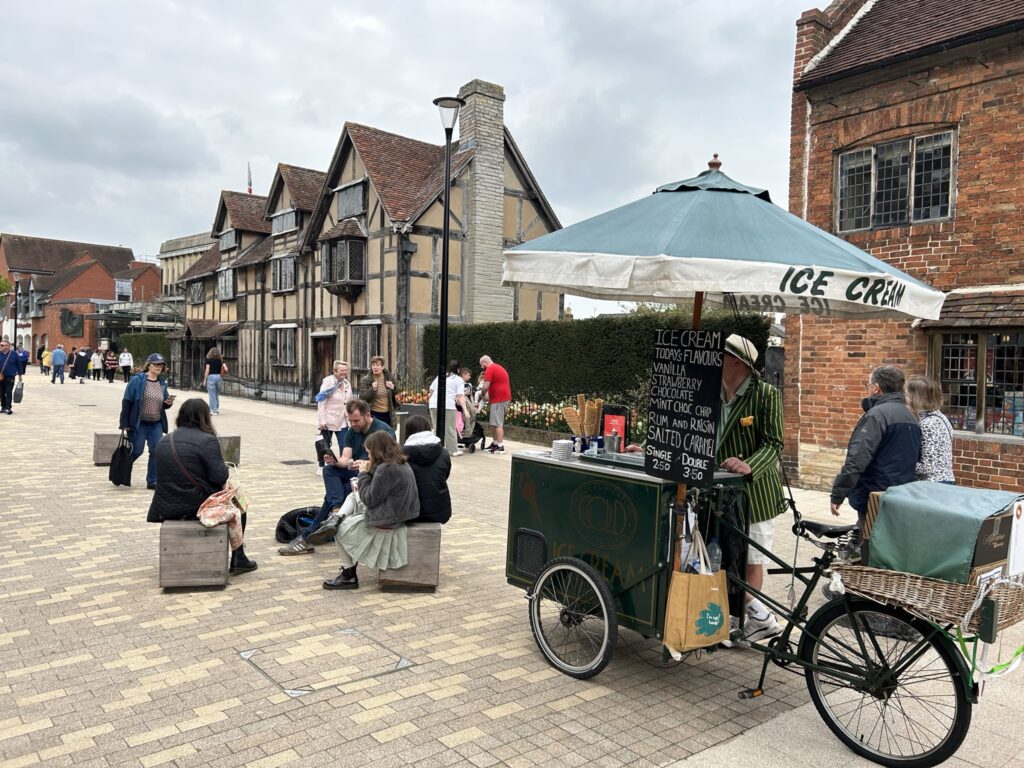
The Gower Memorial was erected in 1888 and is dedicated to Stratford’s most famous and celebrated son, William Shakespeare, and is surrounded by four statues of characters from the bard’s plays.
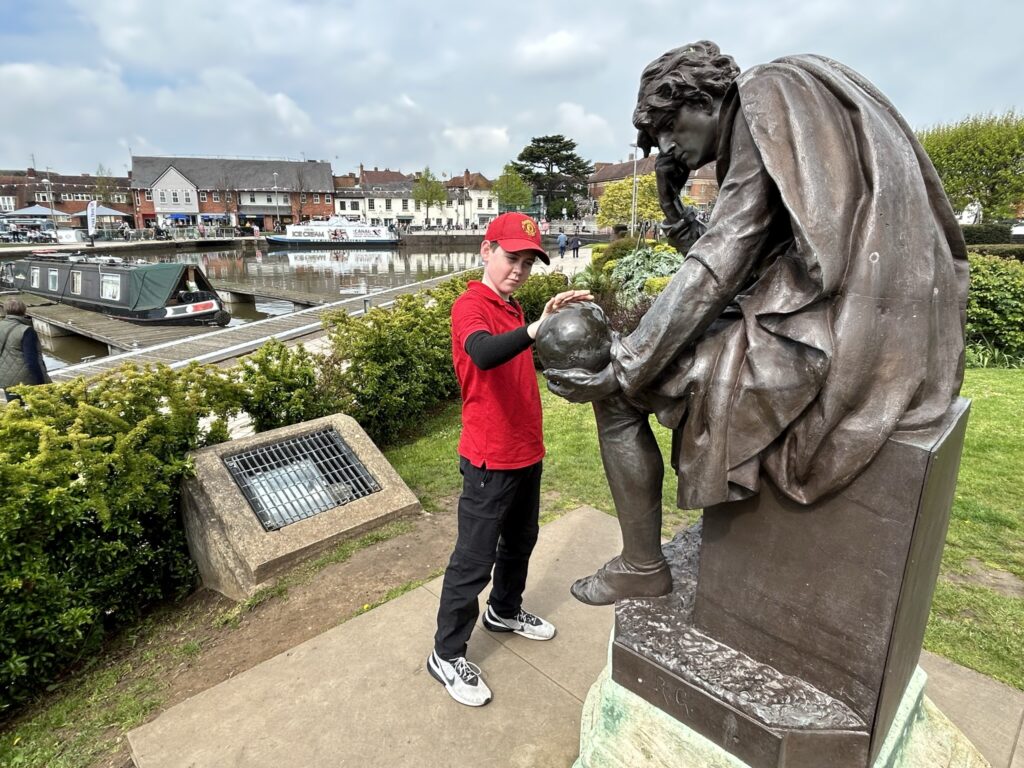
The Recreation Ground is known as the “Rec” to local people, a large park on the eastern side of the River Avon. Home of many annual activities including the Stratford Marathon and Stratford Regatta, plus a bandstand featuring musical performances throughout the summer season. A popular spot for recreation, picnics, and Kidsetter’s activities.
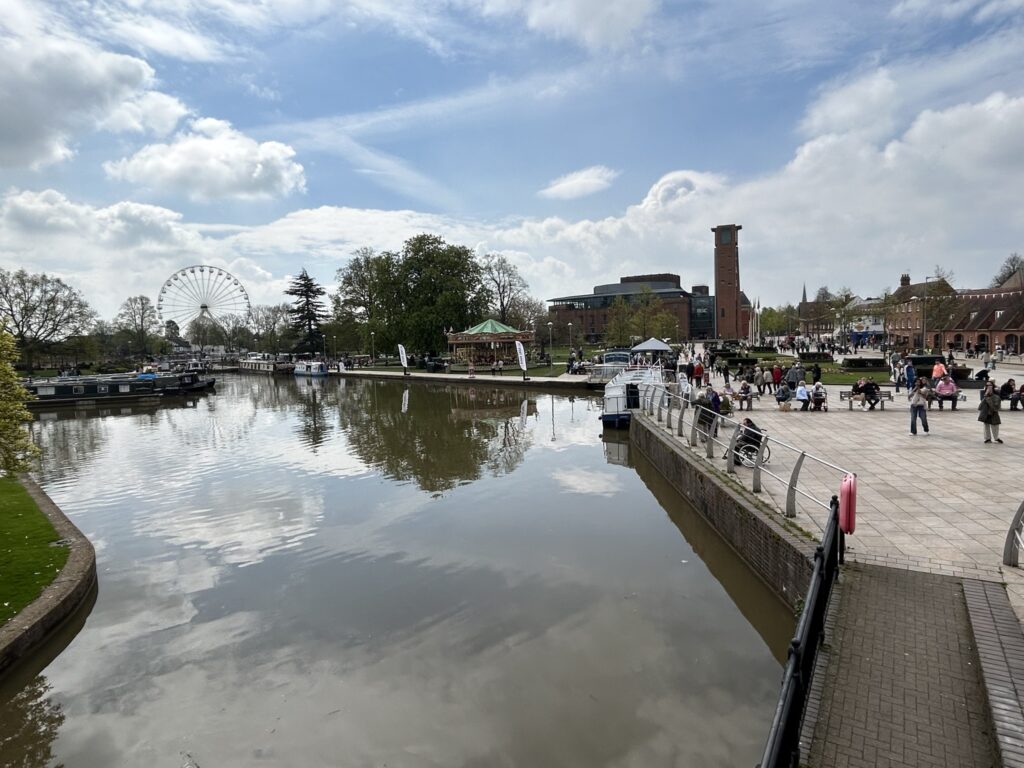
Stratford’s Historic Spine is the name given to a route in Stratford-upon-Avon along which many of the town’s most important and historic buildings are sited, with many of the buildings connected to William Shakespeare. The Historic Spine was once the main route from the town centre to the parish church. It begins in Henley Street at Shakespeare’s Birthplace and finishes in Old Town at The Holy Trinity Church and has buildings from the 14th up to the 20th centuries.
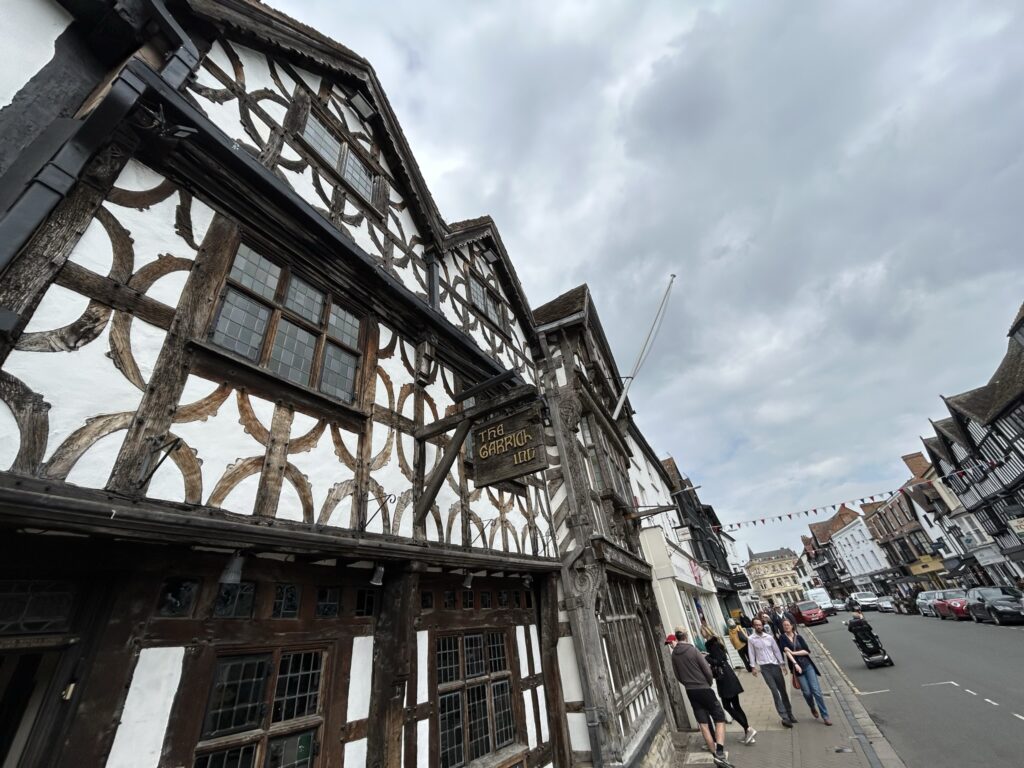
Henley Street is simply superb. The all year Christmas Shop along with the Peter the Rabbit shop add to the wonderful tapestry of which is Henley Street – not forgetting the fabulous Tudor architecture.
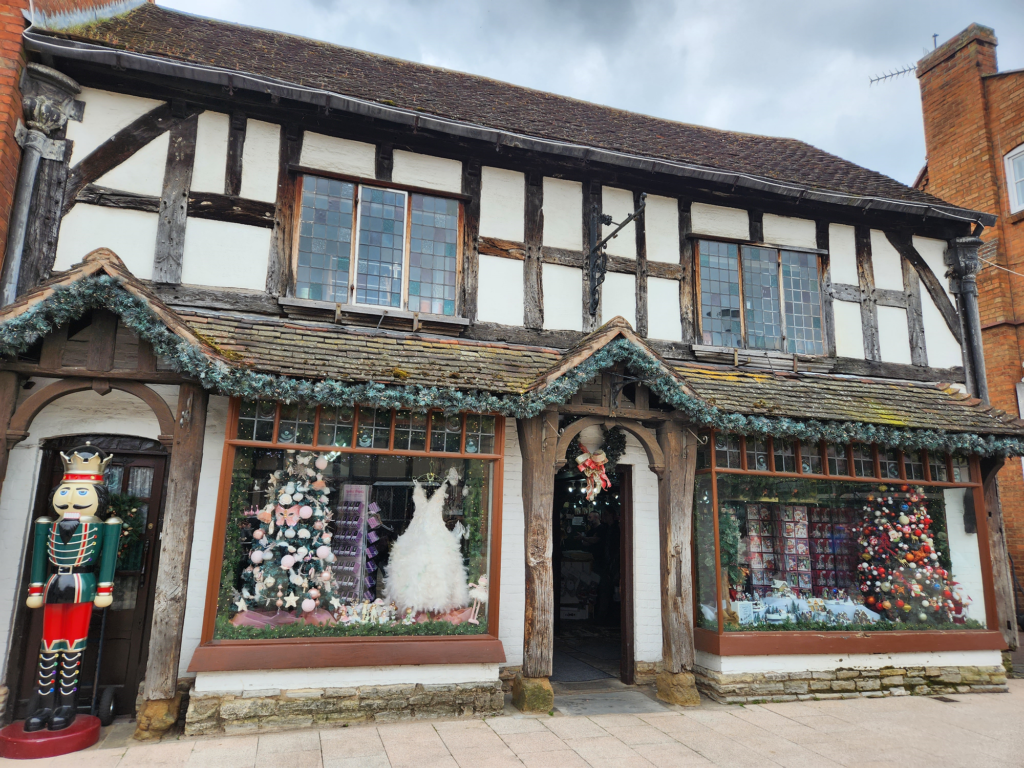
Stratford-upon-Avon has a variety of buskers entertaining the crowds adding to the towns excitement and liveliness.
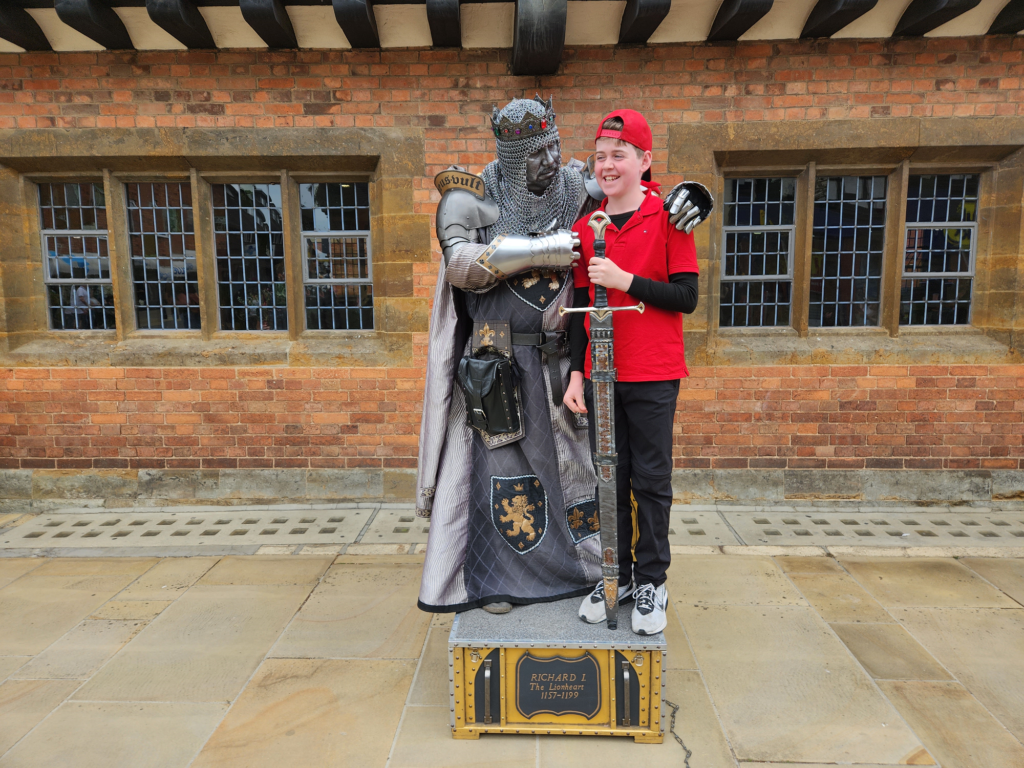
The highlight was visiting Shakespeare’s Birthplace. From the security personal to the in-house tour guides the staff were outstanding. Prior to entering Shakespeare’s childhood home we walked through a unique gathering of rare artefacts from his life such as books, photographs, works of art.
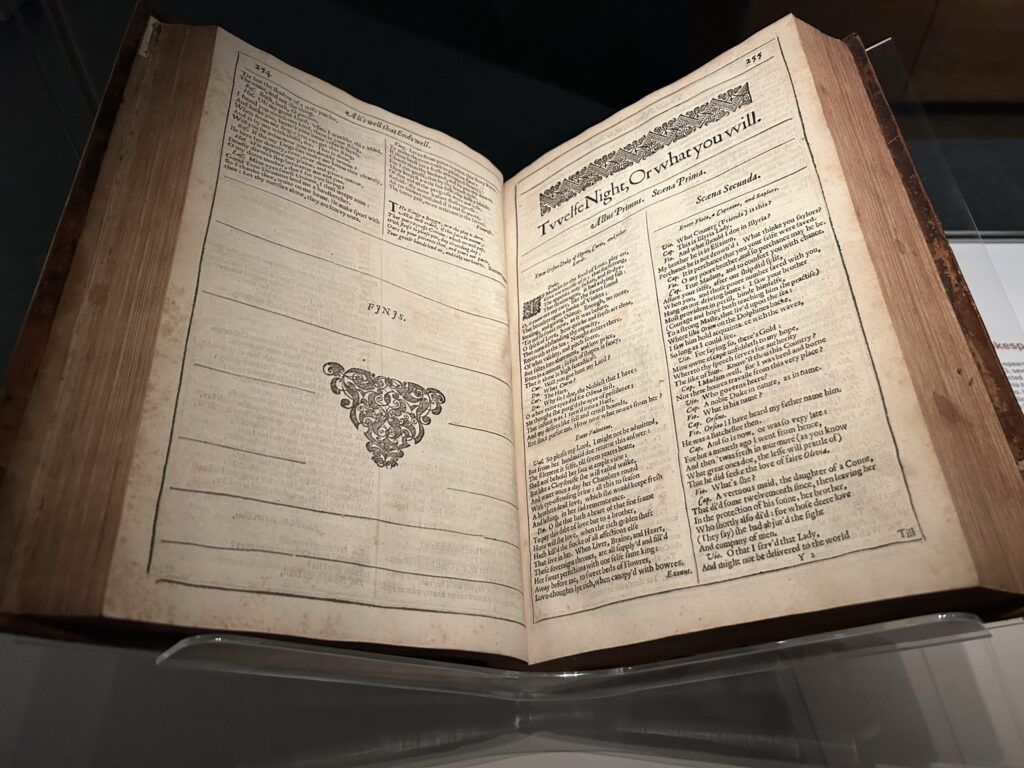
Shakespeare has inspired people throughout history and carries on doing so today, whether through his plot lines, his language, his characters or his life story.
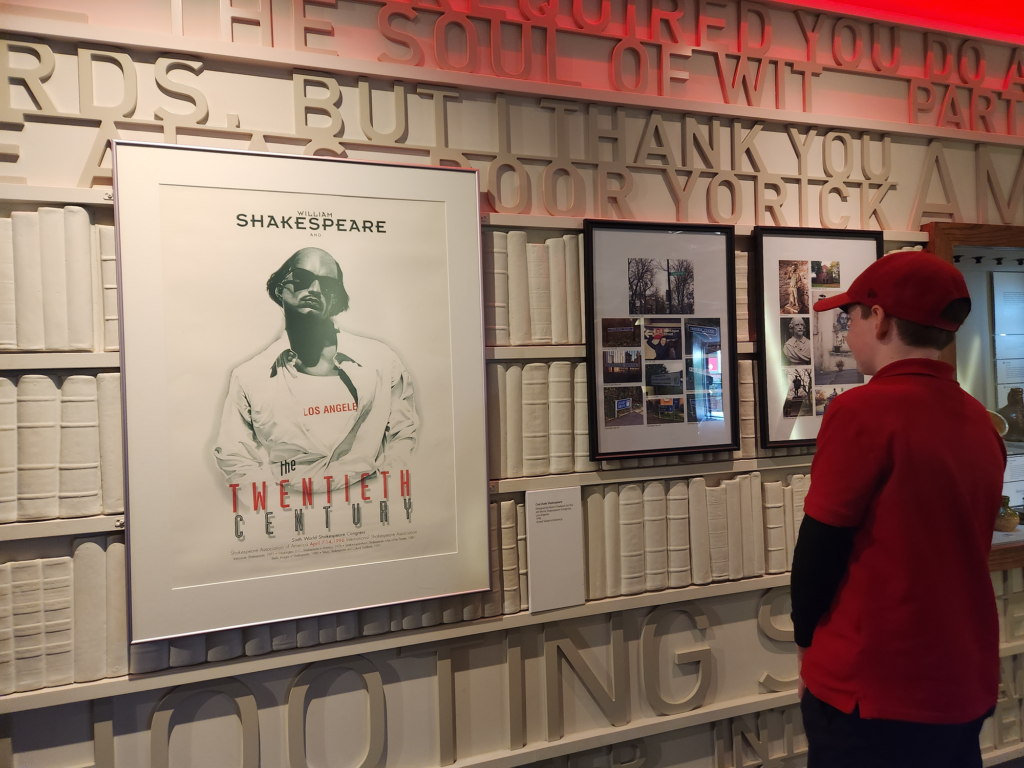
The layout of the main house is typical for the time. There is a parlour, hall, cross-passage and workshop on the ground floor. On the first floor are 3 bedrooms. William Shakespeare’s father, John, had owned the land and a pre-existing building on the site since at least 1552.
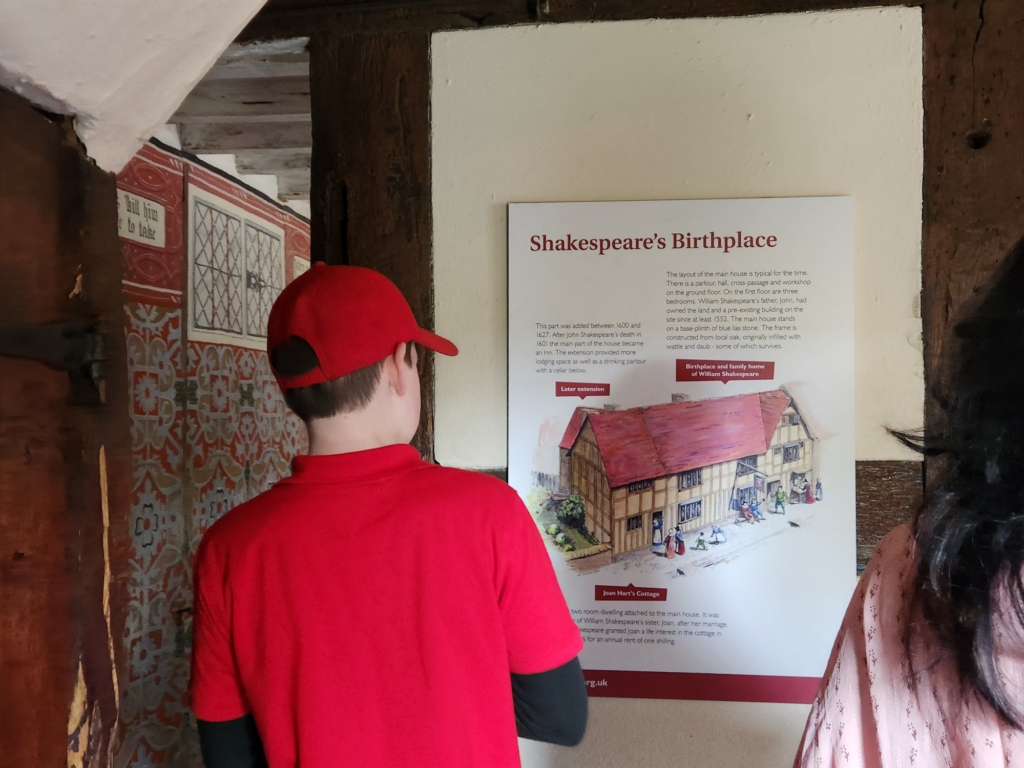
The frame is constructed from local oak, originally infilled with wattle and daub – some of which survives.
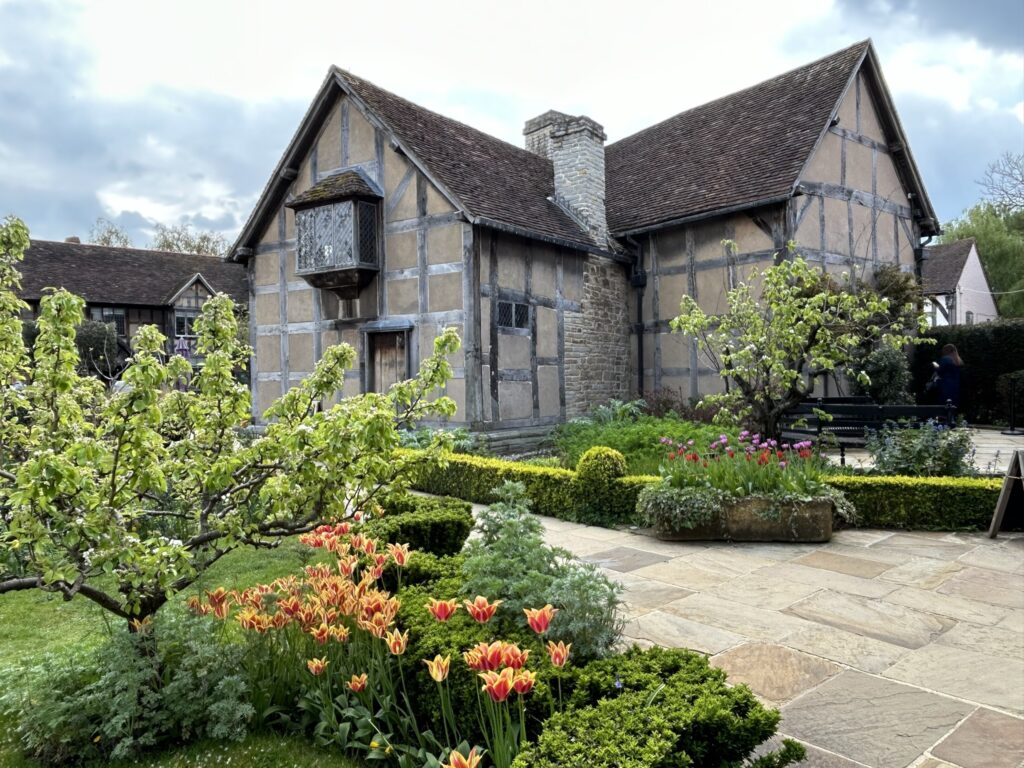
The window shown below was formerly in the birthroom of Shakespeare’s Birthplace. It became traditional for pilgrims to etch their names into the glass a symbol of their visit. The earliest recorded date on the window is 1806.
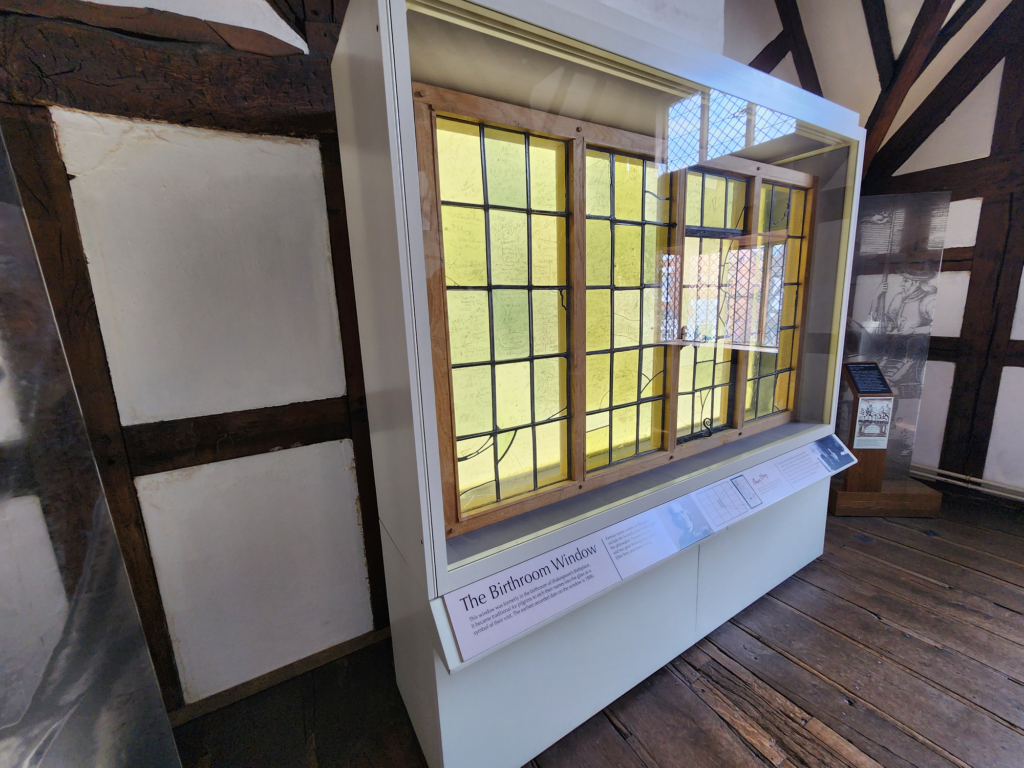
Our Kidsetter enjoyed hearing tales of Shakespeare’s family life and being able to get up close to objects from the collections as he discovered how the extraordinary playwright continues to shape our lives today.
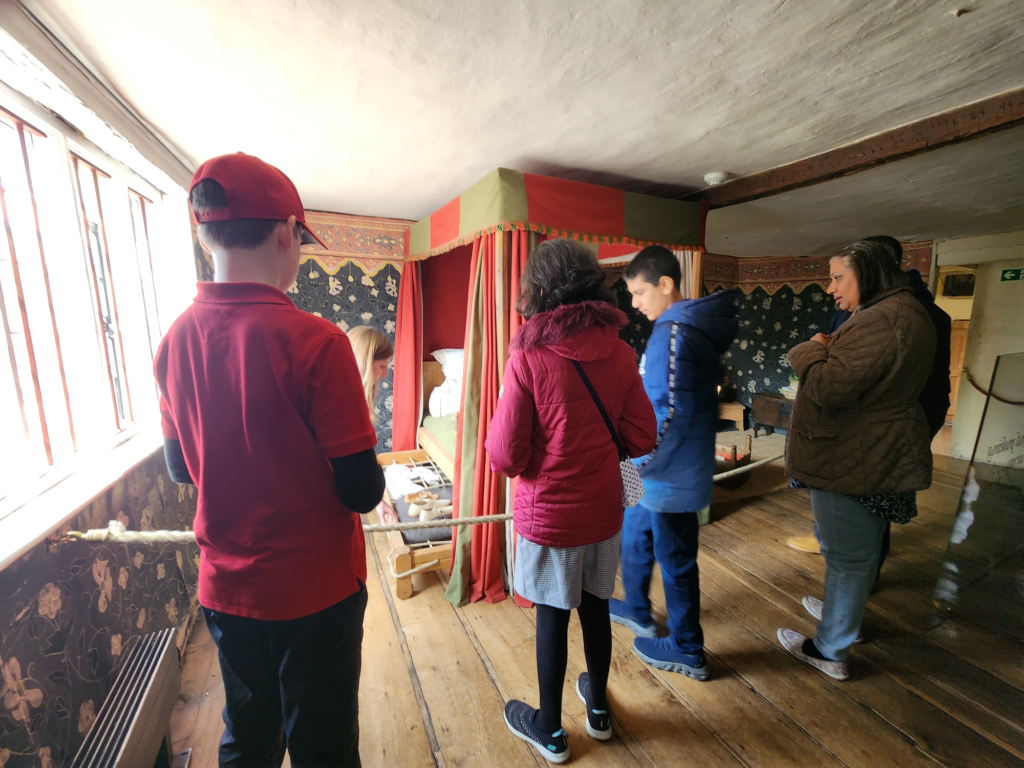
In order to save the building where William Shakespeare was born a public campaign was launched, supported by Charles Dickens. The property was purchased at auction by the Shakespeare Birthplace Trust in 1847 for £3,000.
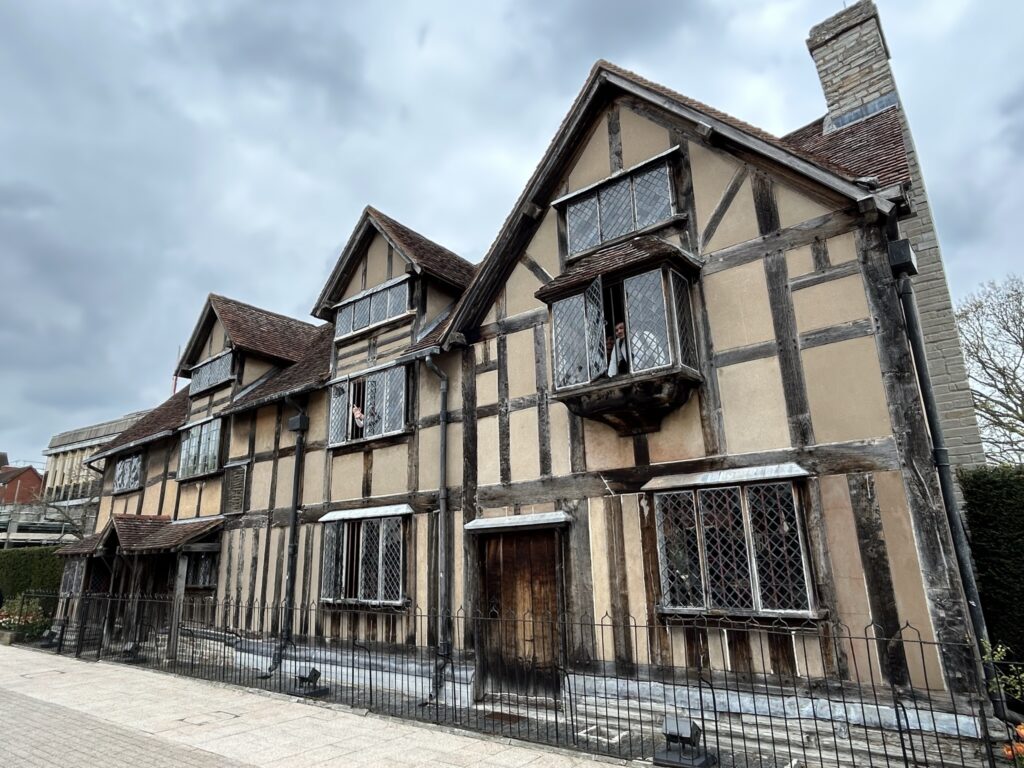
Our Kidsetter adores the Horrible Histories book series and we just had to purchase the one on Shakespeare. He devoured the book and enjoyed drawing the pictures.
